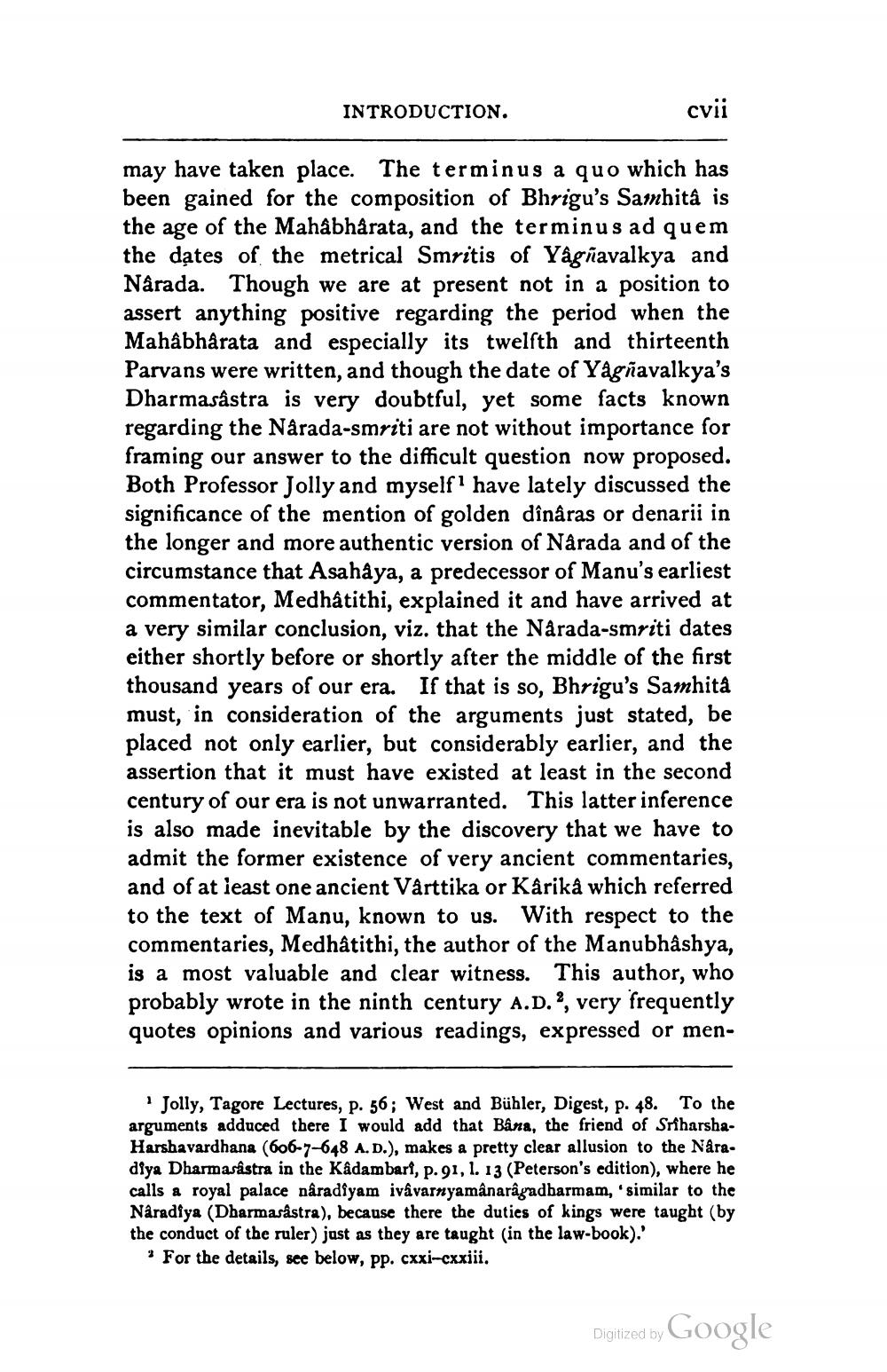________________
INTRODUCTION.
cvii
may have taken place. The terminus a quo which has been gained for the composition of Bhrigu's Samhita is the age of the Mahabharata, and the terminus ad quem the dates of the metrical Smritis of Yagnavalkya and Närada. Though we are at present not in a position to assert anything positive regarding the period when the Mahâbhârata and especially its twelfth and thirteenth Parvans were written, and though the date of Yagñavalkya's Dharmasastra is very doubtful, yet some facts known regarding the Narada-smriti are not without importance for framing our answer to the difficult question now proposed. Both Professor Jolly and myself I have lately discussed the significance of the mention of golden dînâras or denarii in the longer and more authentic version of Närada and of the circumstance that Asahaya, a predecessor of Manu's earliest commentator, Medhâtithi, explained it and have arrived at a very similar conclusion, viz. that the Narada-smriti dates either shortly before or shortly after the middle of the first thousand years of our era. If that is so, Bhrigu's Samhita must, in consideration of the arguments just stated, be placed not only earlier, but considerably earlier, and the assertion that it must have existed at least in the second century of our era is not unwarranted. This latter inference is also made inevitable by the discovery that we have to admit the former existence of very ancient commentaries, and of at least one ancient Vårttika or Kårikå which referred to the text of Manu, known to us. With respect to the commentaries, Medhatithi, the author of the Manubhâshya. is a most valuable and clear witness. This author, who probably wrote in the ninth century A.D., very frequently quotes opinions and various readings, expressed or men
Jolly, Tagore Lectures, P. 56; West and Bühler, Digest, p. 48. To the arguments adduced there I would add that Bâna, the friend of SriharshaHarshavardhana (606-7-648 A.D.), makes a pretty clear allusion to the Nära. diya Dharmasastra in the Kadambari, p.91, 1. 13 (Peterson's edition), where he calls a royal palace náradiyam ivavarnyamânarâgadbarmam, similar to the Náradiya (Dharmasastra), because there the duties of kings were taught (by the conduct of the ruler) just as they are taught in the law-book).'
* For the details, see below, pp. cxxi-cxxiii.
Digitized by Google




